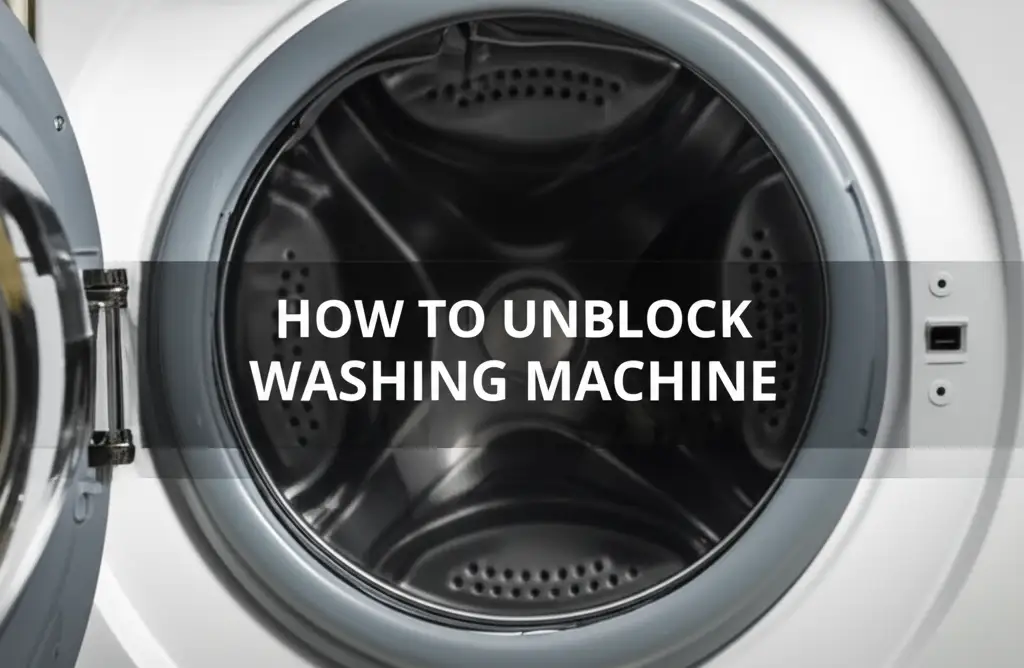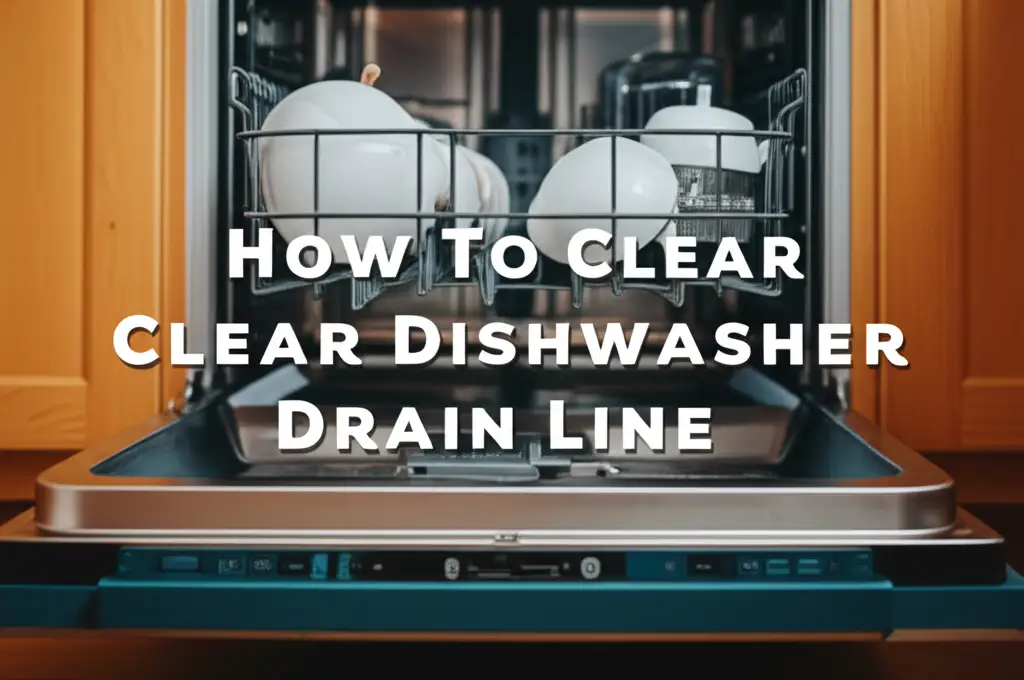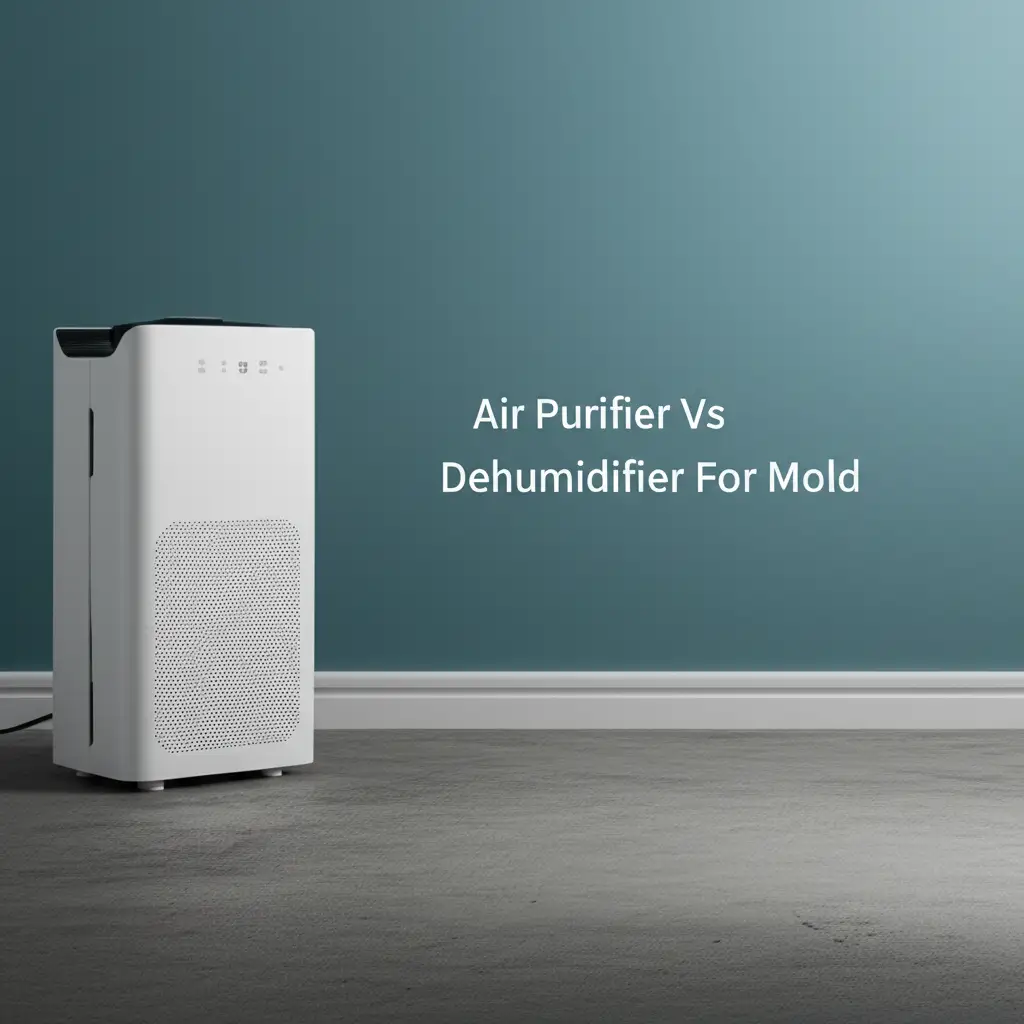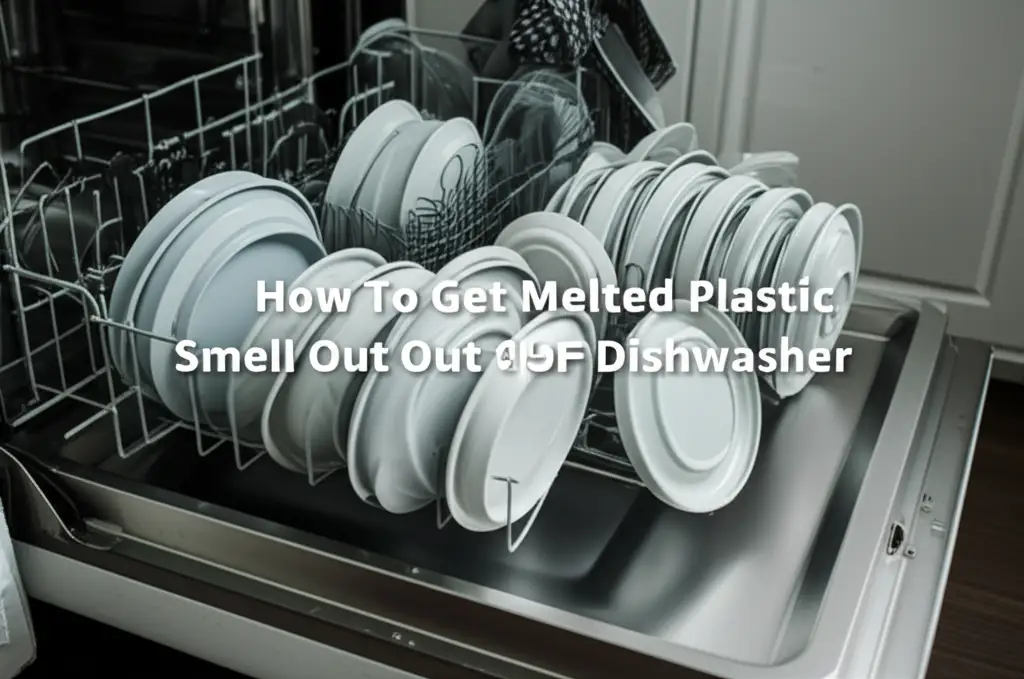· Tessa Winslow · Home Maintenance · 13 min read
How To Unblock Washing Machine

Fix Your Washing Machine: Unblocking Made Easy
A washing machine that will not drain is incredibly frustrating. It stops your laundry in its tracks. You might wonder how to unblock washing machine issues quickly. This guide helps you tackle common blockages yourself.
I understand the annoyance of standing water in your drum. This article will show you simple steps to diagnose and fix the problem. We will cover everything from basic checks to deeper cleaning. You can save time and money by learning these DIY repair methods.
Takeaway
- Always disconnect power and water before starting work.
- Check the drain hose for kinks or blockages first.
- Clean the pump filter regularly to prevent issues.
- Inspect the drain pump for foreign objects.
- Know when to call a professional if needed.
To unblock a washing machine, first disconnect its power and water supply. Then, check the drain hose for kinks or clogs. Next, access and clear the drain pump filter of lint, coins, or small items. If issues persist, inspect the pump itself for obstructions.
Understanding Why Your Washing Machine Gets Blocked
Have you ever wondered why your washing machine decides to stop draining mid-cycle? Blockages are a common problem for many homeowners. They happen for several reasons, often due to items that should not be in the wash. Understanding these causes helps you find the right solution.
One frequent culprit is lint and fabric fibers. Over time, these can build up in the drain pump or hose. Small items like coins, buttons, or even socks can also sneak past the drum. They then get stuck in the filter or pump, stopping water flow. Another cause is excessive detergent use. Too much soap creates a thick residue that can clog pipes. This residue traps lint and debris, making the problem worse. Sometimes, the issue is not inside the machine itself. The drain hose might be kinked or crushed behind the appliance. The standpipe, where the hose empties, can also become clogged. This external blockage prevents water from leaving the machine. Knowing these potential issues helps you narrow down the problem.
Identifying the exact cause makes fixing it much simpler. I always start by thinking about what I last washed. Did I forget to check pockets? Have I been using too much detergent? Pinpointing the origin saves a lot of troubleshooting time. Regular maintenance also helps prevent these annoying blockages. A clean machine runs more efficiently and drains properly.
Safety First: Before You Start Unblocking Your Washing Machine
Before you start any repair work on your washing machine, safety is extremely important. Working with electricity and water can be dangerous. Taking proper precautions protects you from harm. This step is non-negotiable for any DIY appliance repair.
First, always unplug the washing machine from the power outlet. Do not just turn it off at the switch. The plug must be completely out of the wall socket. This removes all electrical current to the machine. Next, turn off the water supply to the washing machine. You will find two taps behind the machine, one for hot water and one for cold. Turn both of these off tightly. This prevents any water from flowing into the machine while you work. Have towels and a bucket ready. Even after turning off the water, some water might remain in the hoses or pump. You will need these to catch any spills. Prepare your workspace by ensuring it is dry and well-lit. Make sure you have enough room to move the machine if needed. Safety should always be your top priority.
I once forgot to unplug an appliance before working on it. That mistake taught me a valuable lesson. It is easy to get excited about fixing something quickly. However, a few moments spent on safety steps can prevent serious accidents. Always prioritize your well-being. Thinking about safety measures first simplifies your entire process.
Checking the Drain Hose and Standpipe
Once you have ensured safety, your first step in learning how to unblock washing machine drainage should be checking the drain hose. This is often the easiest fix for a blocked machine. A kinked or obstructed hose prevents water from exiting properly. It is a simple check that can save you a lot of time.
Carefully pull your washing machine away from the wall. This gives you access to the back of the appliance. Locate the corrugated drain hose, which is usually grey or black. It runs from the back of the machine to a standpipe or a sink. Inspect the entire length of this hose. Look for any sharp bends, kinks, or crushing. Sometimes, the machine itself pushes against the hose, causing a blockage. Gently straighten any kinks you find. If the hose looks damaged, it might need replacement. Next, check the connection point at the standpipe or sink. The hose should be securely inserted but not pushed too far down. If it is too deep, it can create a siphon effect that prevents proper drainage. Sometimes, the standpipe itself gets blocked. You can try pouring a bucket of hot water down the standpipe. If it drains slowly or not at all, the standpipe has a blockage. You might need a plumber’s snake for that. For more general DIY maintenance tips for your appliance, consider exploring our guide on do-it-yourself washing machine care.
I once spent an hour disassembling parts of my machine, only to find a stubborn kink in the drain hose. It was a humbling experience. Always start with the simplest possible solutions. A visual inspection of the drain hose often solves the mystery.
Cleaning the Washing Machine Pump Filter (Coin Trap)
Many washing machines have a pump filter, also known as a coin trap. This filter catches small objects and lint before they reach the drain pump. Over time, this filter can become clogged. A clogged pump filter is a very common reason for a washing machine not draining. Cleaning it is a key step in how to unblock washing machine problems.
The location of the pump filter varies by brand and model. Most front-loading machines have it at the bottom front, behind a small access panel. Some top-loaders might have it accessible from the back or inside the drum. Consult your appliance manual if you cannot find it. Before opening the filter, place towels and a shallow pan underneath. There will be residual water in the machine that needs to drain. Slowly unscrew or unclip the filter cover. Water will start to come out. Let all the water drain before fully removing the filter. Once removed, inspect the filter for lint, hair, coins, buttons, or other debris. Clean it thoroughly under running water. Use an old toothbrush to scrub away any stubborn grime or soap scum. Also, check the housing where the filter sits. Reach inside with your fingers to feel for any remaining objects. These small items can stop your machine from draining properly.
I make it a point to clean this filter every few months. It is amazing what kind of treasure trove I find in there. This simple maintenance step prevents many drainage issues. Regular cleaning saves you from bigger problems. It ensures your machine runs smoothly. You might also be interested in how certain plumbing configurations impact your machine’s draining, which you can learn more about by reading our article on what plumbing do you need for a washing machine.
Addressing Blockages in the Drain Pump
If the drain hose is clear and the pump filter is clean, the problem might be directly in the drain pump. The drain pump moves water out of your washing machine. If something obstructs its impeller, water cannot leave. This step is more involved than cleaning the filter, but it is often necessary to unblock washing machine drainage.
First, ensure the machine is completely unplugged and water is off. You will likely need to tilt the machine back or lay it on its side for better access. Be careful, as washing machines are heavy. You might need a helper for this part. The drain pump is usually located at the bottom of the machine, near where the drain hose connects. It is a cylindrical or box-shaped component. You might see hoses connected to it. Carefully detach the hoses from the pump. Be prepared for more residual water to spill out. Once the hoses are off, you can typically unbolt or unclip the pump from the machine’s frame. Inspect the inlet and outlet ports of the pump. Look for any debris, socks, or foreign objects stuck inside. The impeller, a small fan-like component inside the pump, should spin freely. If it feels stiff or blocked, there is likely something caught in it. You can use pliers or long-nose tweezers to carefully remove any obstructions. Be gentle to avoid damaging the impeller.
I once found a child’s small toy car lodged in my drain pump. It was a tiny thing, but it completely stopped the machine. It just goes to show that anything can get in there. Taking the time to inspect the pump directly can solve even stubborn blockages. If your machine is older or has chronic issues, understanding if a machine will drain when turned off might also provide context on how its internal systems manage water flow, as discussed in will a washing machine drain if turned off.
Clearing the Sump Hose and Internal Hoses
Sometimes, the blockage is deeper within the washing machine’s internal hose system. The sump hose connects the wash tub to the drain pump. Other internal hoses also move water around the machine. These hoses can accumulate lint, soap scum, or small items over time. Cleaning them is a crucial step in a comprehensive effort to unblock washing machine issues.
Accessing these hoses typically requires tilting or laying the machine down, similar to accessing the drain pump. Once you have located the sump hose, which is usually a large, flexible hose at the bottom of the tub, you will need to detach it. Use pliers to loosen any clamps holding it in place. Be ready for a significant amount of water to drain out, as this hose connects directly to the wash tub. Place a large bucket or pan underneath. Once detached, inspect the hose thoroughly. You can use a flashlight to look inside. A long, flexible brush or a straightened wire coat hanger can help dislodge any blockages. Push it through the hose to clear out any gunk. Do the same for any other smaller internal hoses connected to the pump or tub. Reattach all hoses securely, ensuring clamps are tight. Loose hoses can cause leaks.
I often use a mixture of hot water and vinegar for a final rinse through these hoses after clearing physical debris. This helps dissolve any lingering soap scum or grease. While not a direct unblocking method, keeping these hoses clean prevents future issues. Regular cleaning and maintenance are essential for appliance longevity. Cleaning your washing machine itself helps prevent internal blockages. Learn more about effective cleaning methods in our guides, such as how to clean top loader washing machine or how to clean LG HE washing machine.
When to Call a Professional: Knowing Your Limits
You can handle many washing machine drainage issues yourself. However, some problems are better left to professionals. Knowing your limits protects you from injury and prevents further damage to your appliance. It is smart to recognize when a task is beyond your DIY capabilities.
Consider calling a technician if you have tried all the steps above and the machine still does not drain. This might mean the blockage is deep within the internal plumbing system of your house. It could also indicate a faulty drain pump or another internal component that needs replacement. Diagnosing and replacing internal electrical parts can be dangerous without proper training. Another sign to call a pro is if you cannot access the components safely. Washing machines are heavy. If you cannot tilt or move it without risking injury, do not force it. Professionals have the right tools and expertise. They can quickly diagnose complex issues. They also have access to specific replacement parts. Attempting a repair beyond your skill level can cost more in the long run. You might damage other parts or void your warranty.
I always weigh the cost of a professional service against the risk of making things worse. Sometimes, the peace of mind that comes with expert help is worth it. It is better to have a working machine than a bigger problem. A professional washing machine repair technician can get your appliance back in top shape safely and efficiently.
FAQ Section
What are the common signs of a washing machine blockage?
Common signs include water not draining from the drum after a wash cycle. You might see standing water inside. The machine may also stop mid-cycle, displaying an error code related to drainage. Clothes might still be soaking wet after the cycle finishes. You might also hear unusual noises, like a humming sound from the pump without water movement.
Can I use chemical drain cleaners to unblock my washing machine?
No, you should avoid using chemical drain cleaners in your washing machine. These harsh chemicals can damage internal components like rubber seals, plastic hoses, and the drain pump. They can also corrode metal parts over time. Stick to mechanical methods for clearing blockages. Hot water and vinegar can help with soap scum, but not for solid clogs.
How often should I clean my washing machine filter?
You should aim to clean your washing machine’s pump filter (coin trap) every three to six months. If you wash a lot of pet hair or items with small debris, consider cleaning it more often, perhaps monthly. Regular cleaning prevents lint and small objects from building up and causing drainage problems. It keeps your machine running efficiently.
What tools do I need to unblock a washing machine?
You will generally need basic tools. These include screwdrivers (Phillips and flathead), pliers (slip-joint or tongue-and-groove), and a flashlight. A shallow pan or baking tray and old towels are essential for catching water. For deeper clogs, a flexible brush or a straightened wire hanger can be useful. Always have a bucket handy for draining water.
Why does my washing machine drain slowly instead of blocking completely?
A slow drain often indicates a partial blockage. Lint, soap scum, or a small item might be causing a restriction, but not a full obstruction. It could be a minor kink in the drain hose. The pump filter might also be partially clogged. Addressing these issues early prevents a complete blockage later. Check the filter and hose first.
Conclusion
Facing a blocked washing machine can feel like a major setback for your laundry routine. But as we have explored, many drainage issues are simple to fix yourself. You now have the knowledge and steps to confidently unblock washing machine problems. Remember to always prioritize safety by unplugging the machine and turning off the water first.
We covered checking the drain hose for kinks, cleaning the crucial pump filter, and inspecting the drain pump for foreign objects. We also looked at clearing internal hoses and identifying when to seek professional help. Regular maintenance, like cleaning the filter, prevents future blockages. Taking these steps can save you money on service calls and keep your laundry flowing smoothly. You can tackle most washing machine clogs. If the problem persists, do not hesitate to call a qualified appliance technician. They can handle complex issues safely.





